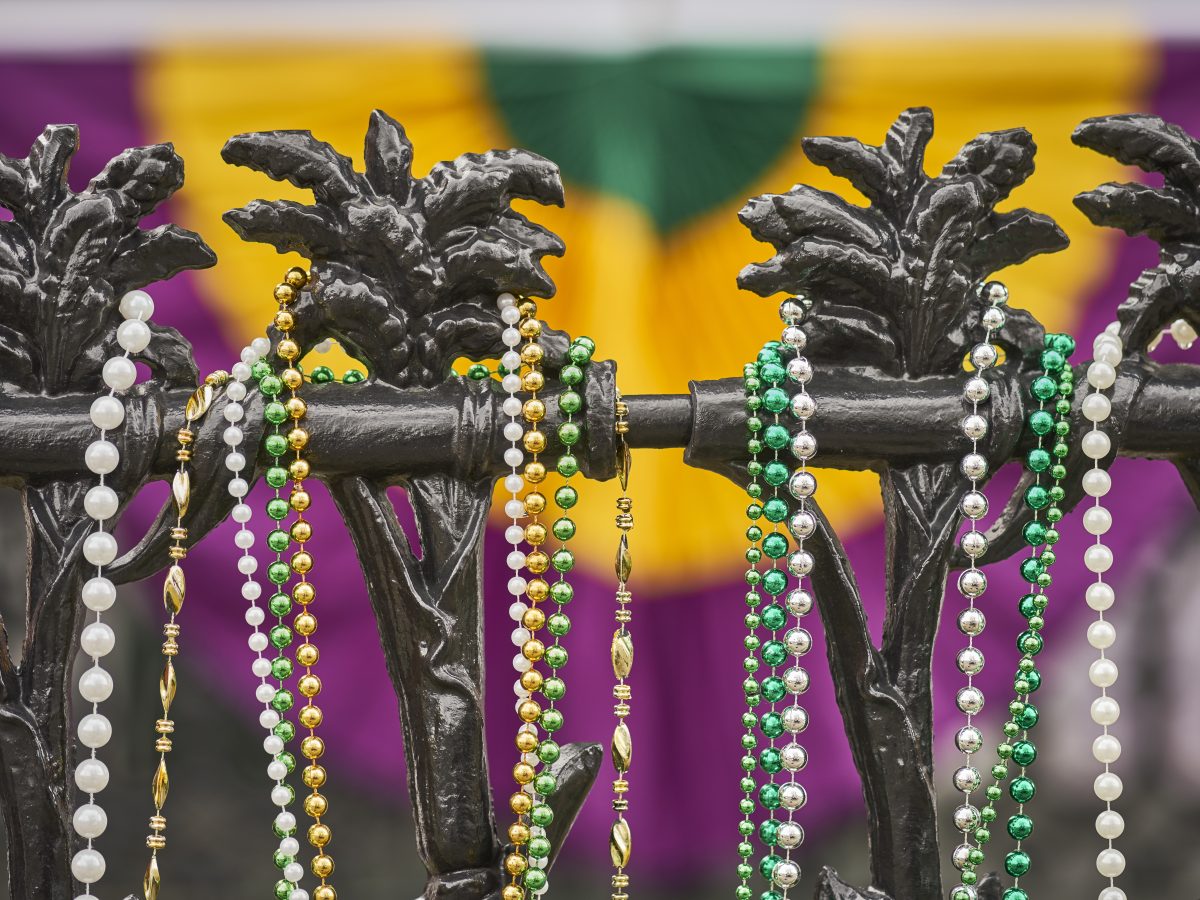
New Orleans, Louisiana (NOLA) is best known for its French Quarter, the grand mansions of St. Charles Avenue, iconic red and green streetcars, and the infamous Bourbon Street, often showcased in films like Girls Trip by Will Packer.
The city embraces a laissez-faire attitude and hosts festivals that draw hundreds of thousands of visitors each year, the most famous being Carnival season and Mardi Gras. Carnival season begins on January 6 and lasts until Mardi Gras, or “Fat Tuesday,” the day before Lent begins. While the season is known for its vibrant costumes, grand parades, and elaborate floats, one of its most cherished traditions is bead throwing.
The tradition is often attributed to a man dressed as Santa Claus in a Mardi Gras parade organized by the Twelfth Night Revelers, a historic Carnival krewe. In the 1870s, he was seen tossing toys and gifts from a float, a practice that evolved into the throwing of beads by the 1930s. Beads became especially popular in New Orleans due to the city’s affinity for royal symbolism. The fleur-de-lis, closely associated with the New Orleans Saints football team, represents French royalty, making bead-throwing a fitting custom since royalty historically tossed costume jewelry to crowds.
Despite their strong association with New Orleans, Mardi Gras beads are actually imported from countries like Venice, Hong Kong, Japan, and the former Czechoslovakia, according to Doug MacCash, a New Orleans journalist and author of Mardi Gras Beads. Importing these beads makes them more accessible and affordable for the entire Carnival season. Beads also play a significant economic role for krewes—the social organizations responsible for hosting parades. Since city ordinances prohibit the commercialization of Mardi Gras parades, many beads now bear the names of the krewes that distribute them. This allows krewes to sell beads to participants, helping fund parade floats and other essential festivities.
Over time, Mardi Gras traditions, including bead throwing, have evolved. New Orleans native and journalist Megan Braden-Perry recalls how the celebration has changed.
“There’s gentrification, and then there’s this transplant versus local versus native-native, pre-Katrina, post-Katrina, Black, white,” Braden-Perry tells GU. “There are so many different experiences. I could go with you for Mardi Gras one year, and we could have a completely Black experience uptown, or we could do all the touristy things.”
Bead throwing, once exclusive to carnival season, is now a year-round tradition embraced by restaurants and tourist attractions. Visitors often collect beads as souvenirs or symbols of their time in the city. While some believe picking up beads from the ground is bad luck, Braden-Perry notes that this was not always the case. As a child, she often gathered undamaged beads, though she acknowledges that hygiene concerns have made the practice less common today.
Despite their popularity, concerns over the environmental impact of Mardi Gras beads have grown. Each year, an estimated 25 million pounds of plastic beads are thrown during the celebrations. Anna Nguyen, External Affairs Manager for the City of New Orleans, emphasizes the city’s commitment to quick cleanup efforts so that daily life can resume promptly after the festivities.
“Each parade route is divided into different zones, and it’s the responsibility of each zone to clean up their area,” Nguyen tells GU. “This ensures the entire route is cleaned simultaneously, rather than waiting for one truck to cover the entire parade path.”
To address waste concerns, the city partnered with New Orleans & Co. and Grounds Krewe to launch Recycle Dat!, a carnival recycling initiative. In 2022, the city found that discarded beads and other parade waste were clogging storm drains. In response, a pilot program was introduced in 2023 to recycle aluminum cans, beads, and other throws. Within a single weekend, seven tons of waste were diverted from landfills. This effort has inspired other festivals to adopt recycling and composting practices, while Krewes are increasingly prioritizing sustainable parade throws.
Although beads remain a quintessential Mardi Gras throw, Krewes are now incorporating more sustainable alternatives, such as reusable coffee thermoses, first aid kits, backpacks, and fanny packs—items that extend beyond a single celebration and contribute to a greener future for New Orleans.
“We love Mardi Gras,” says Nguyen. “We also love the city, and we want to ensure it thrives for generations to come.”